
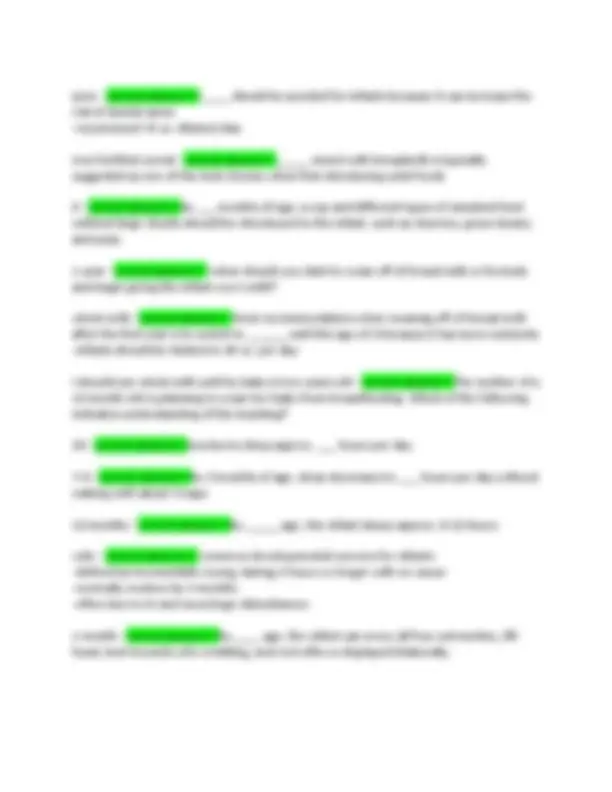
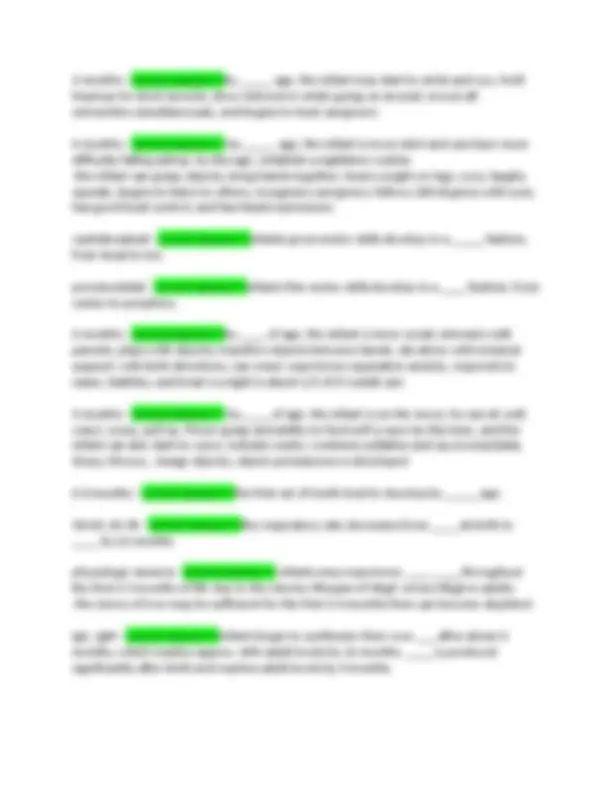
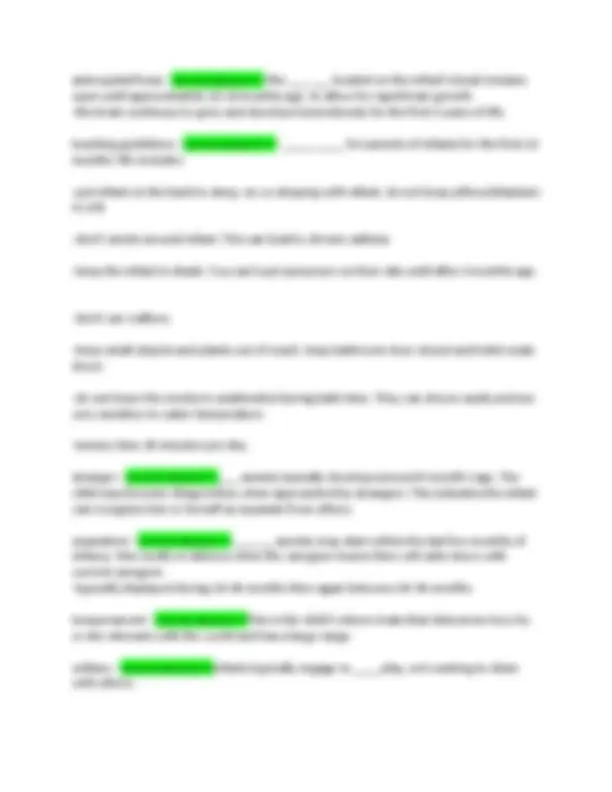
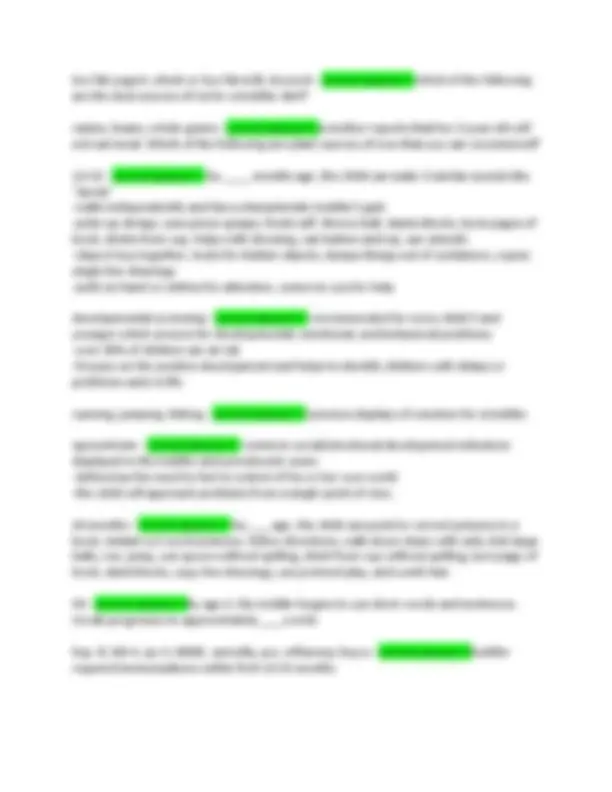
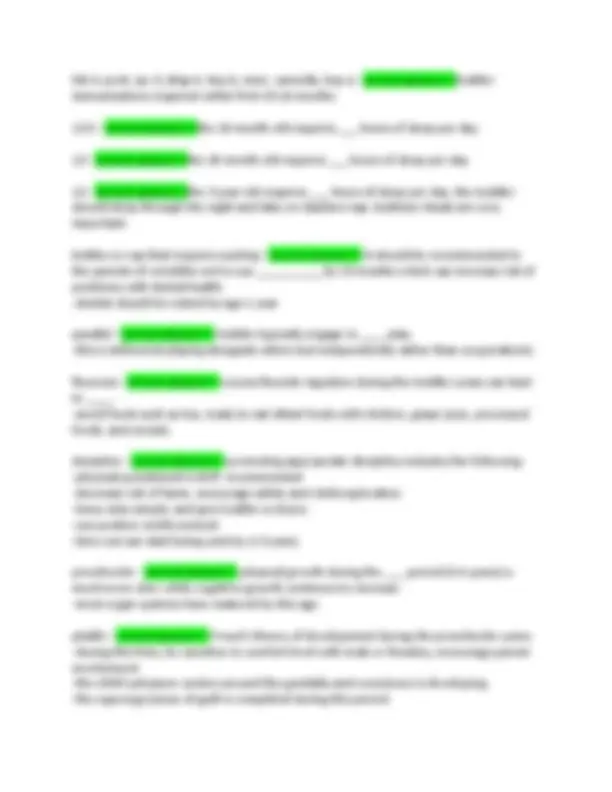
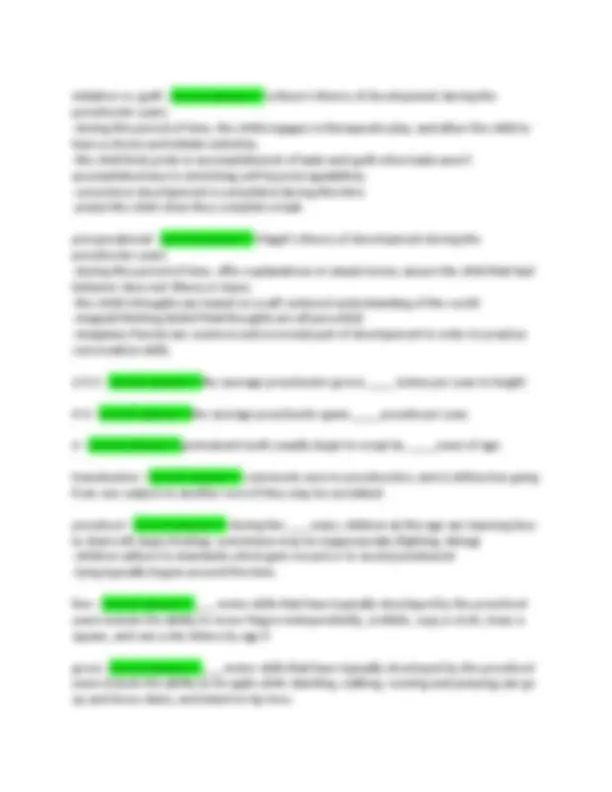
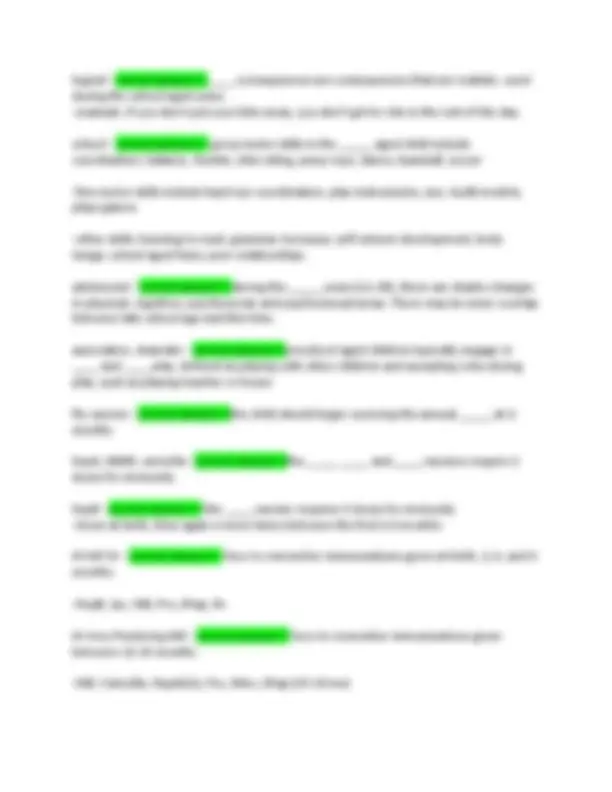
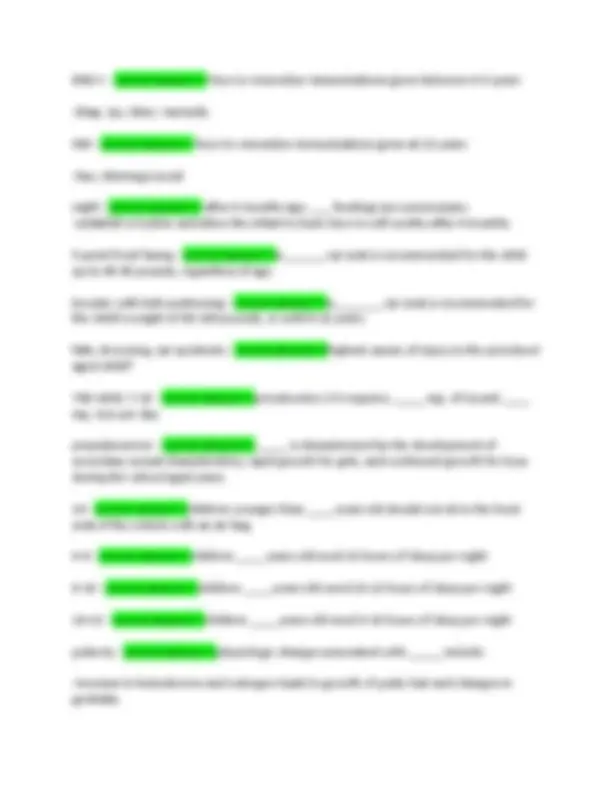
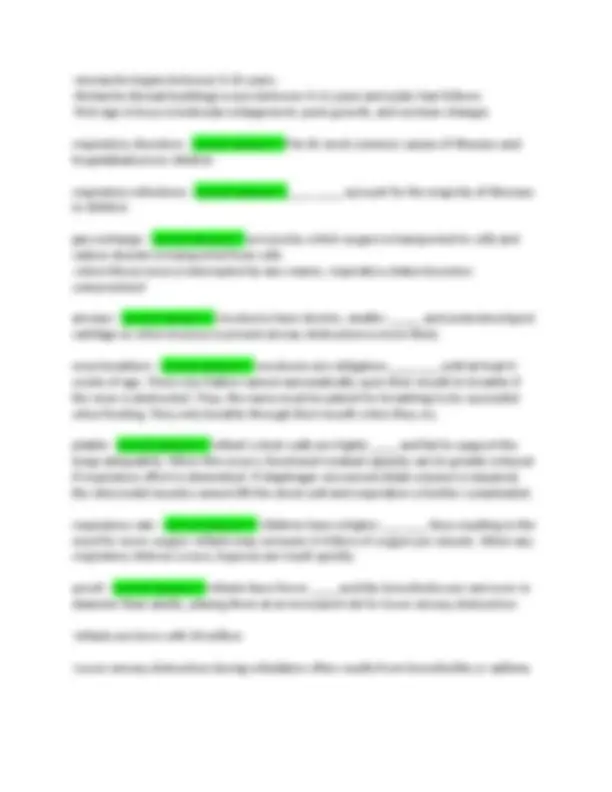
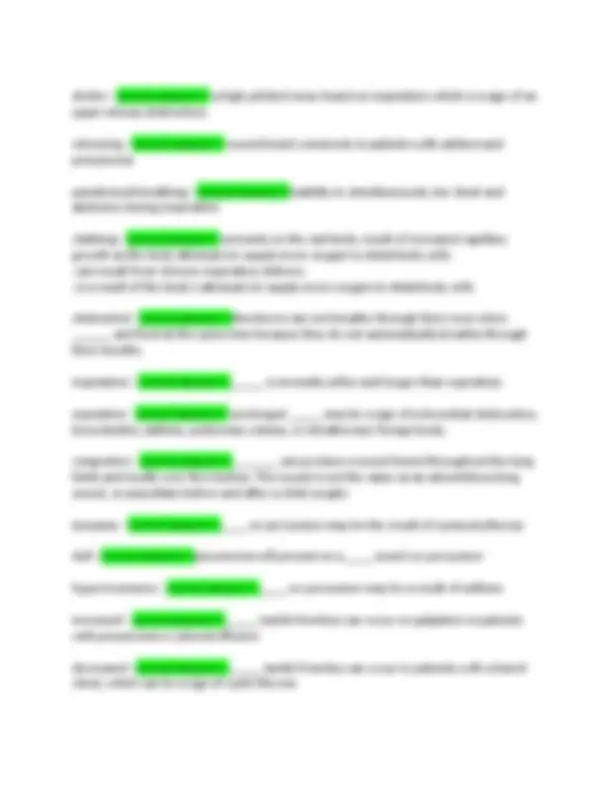
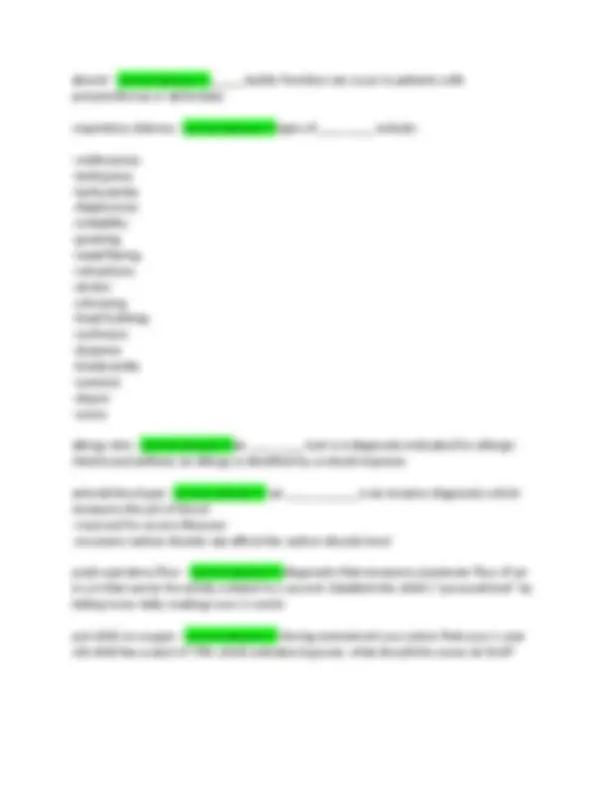
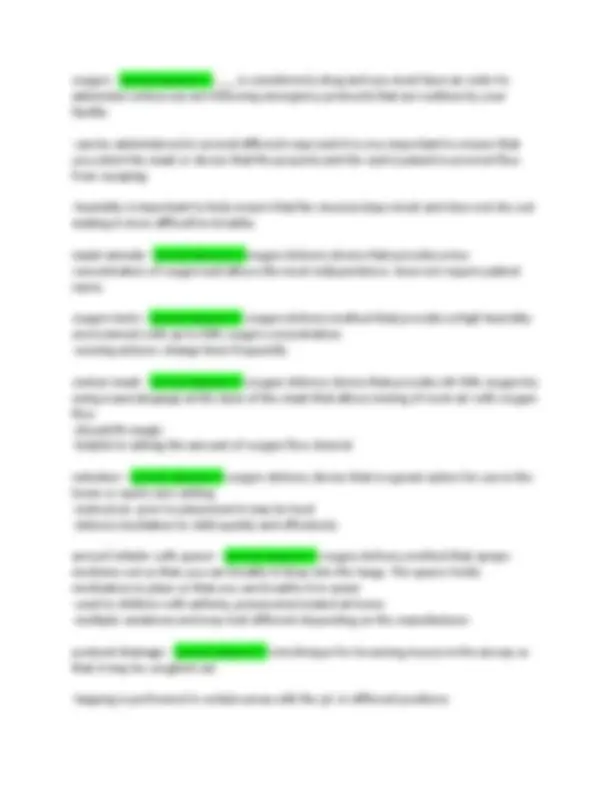
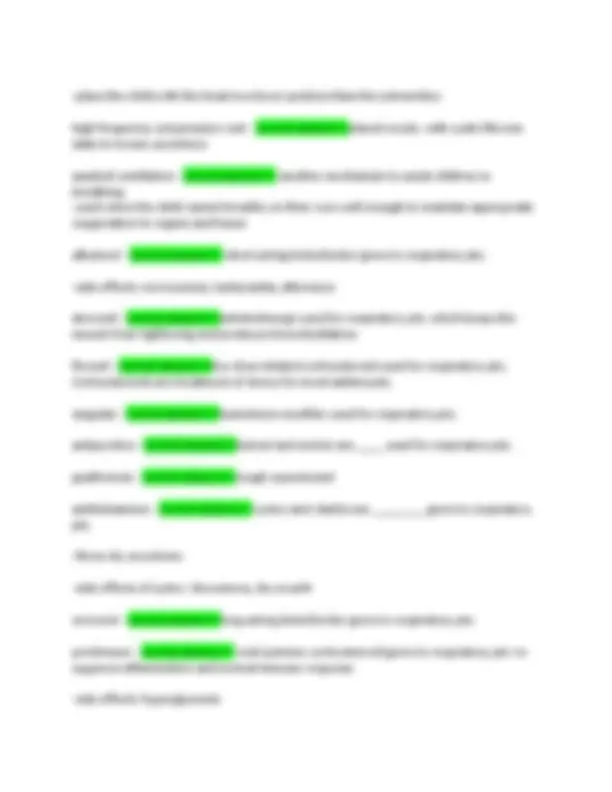
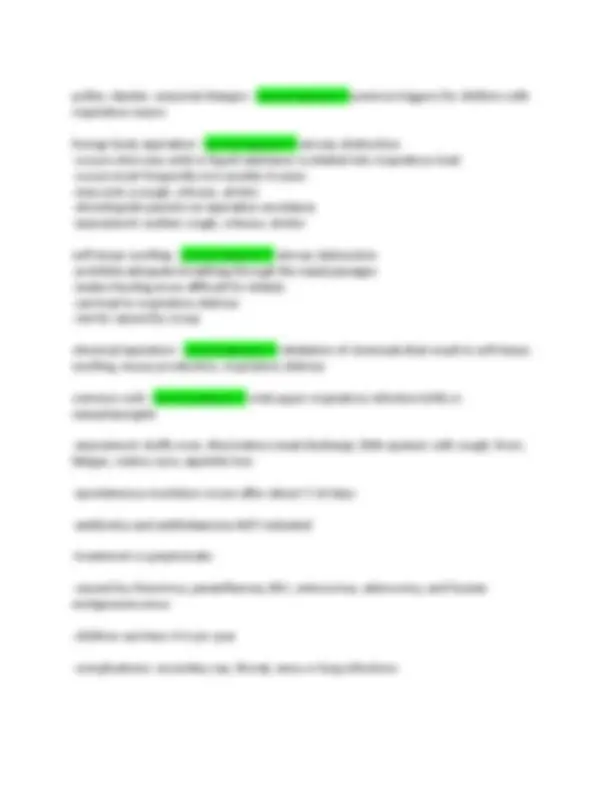
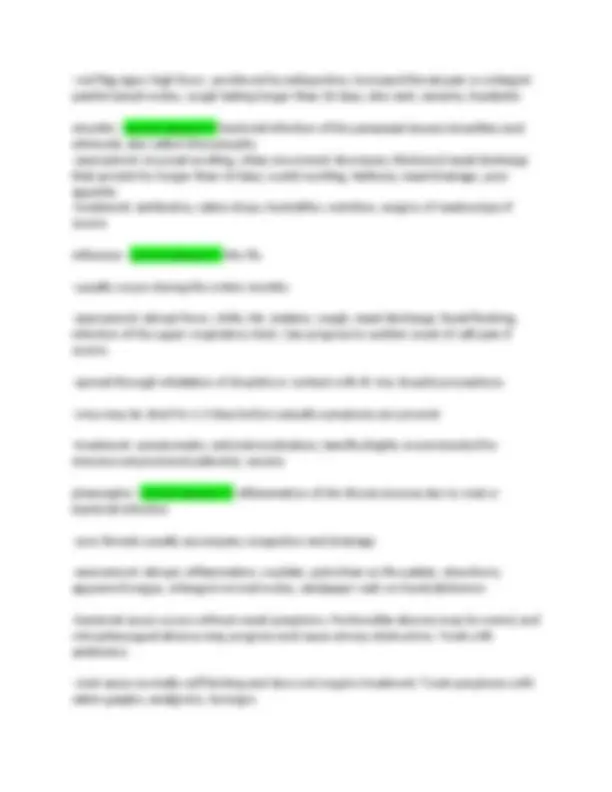
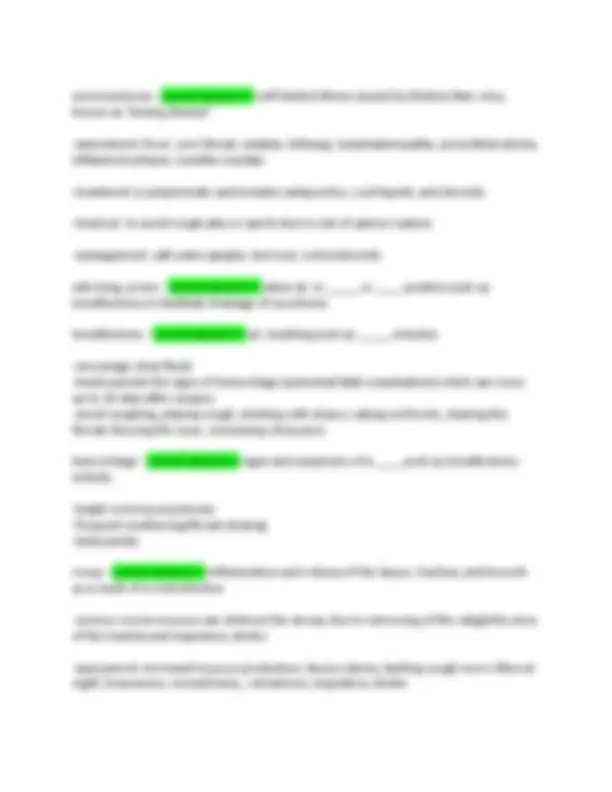
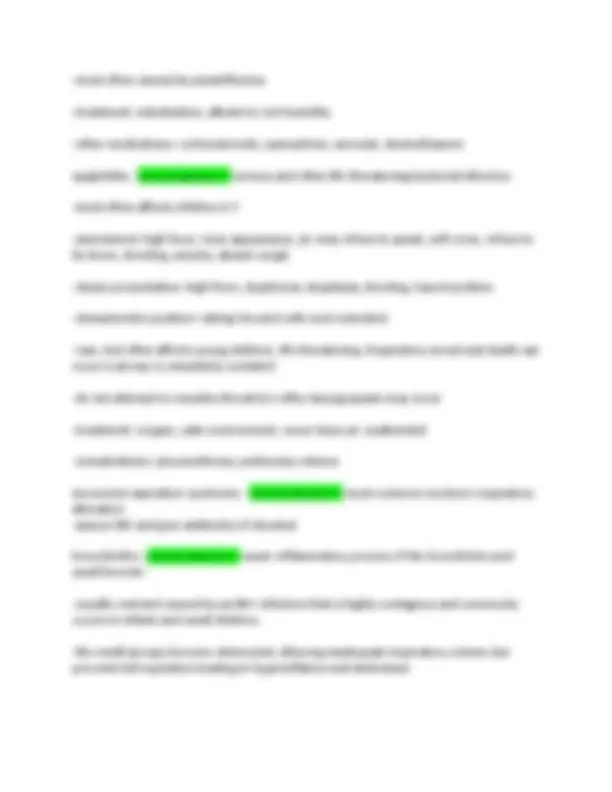
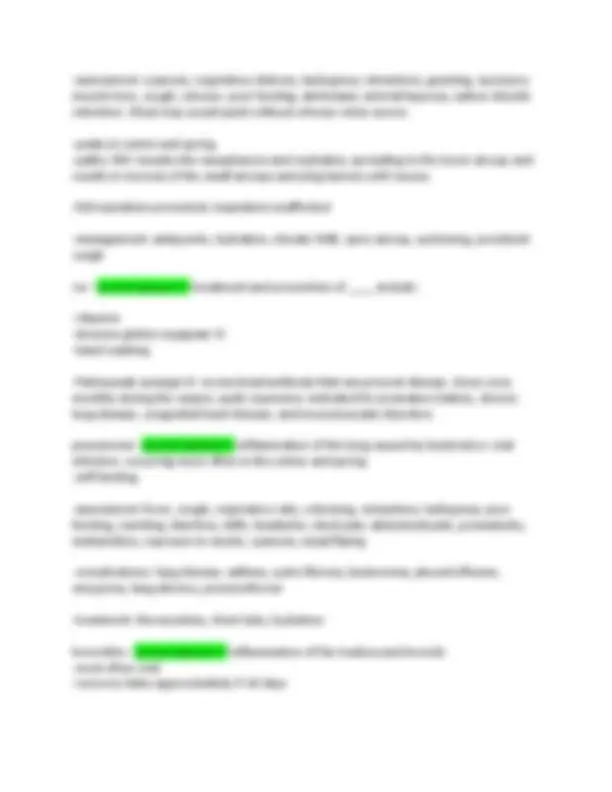
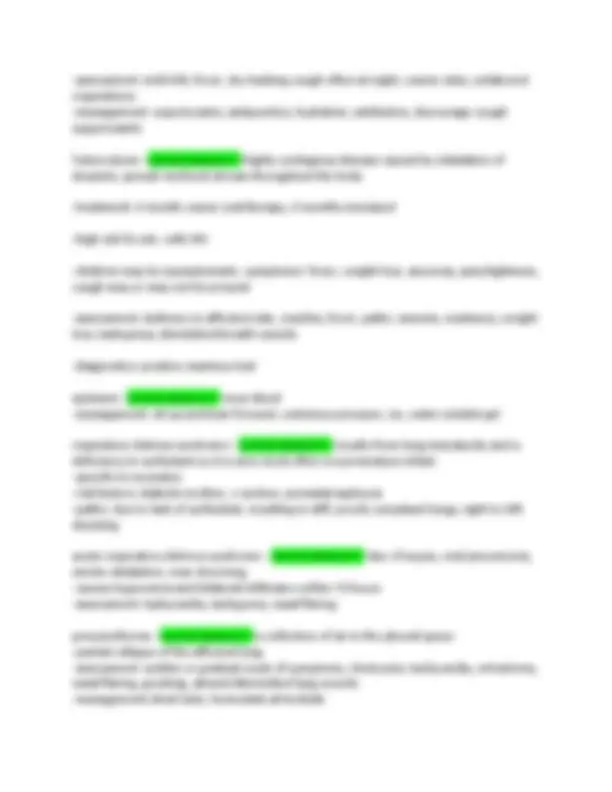
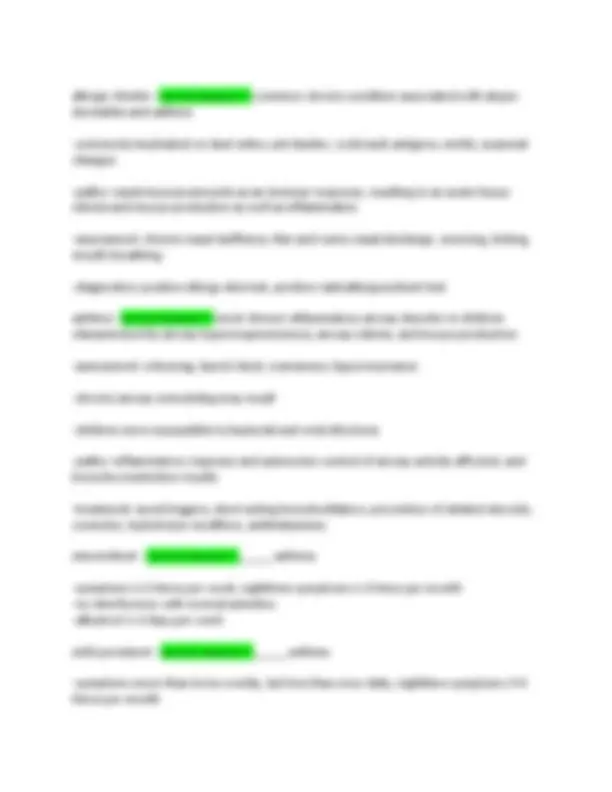
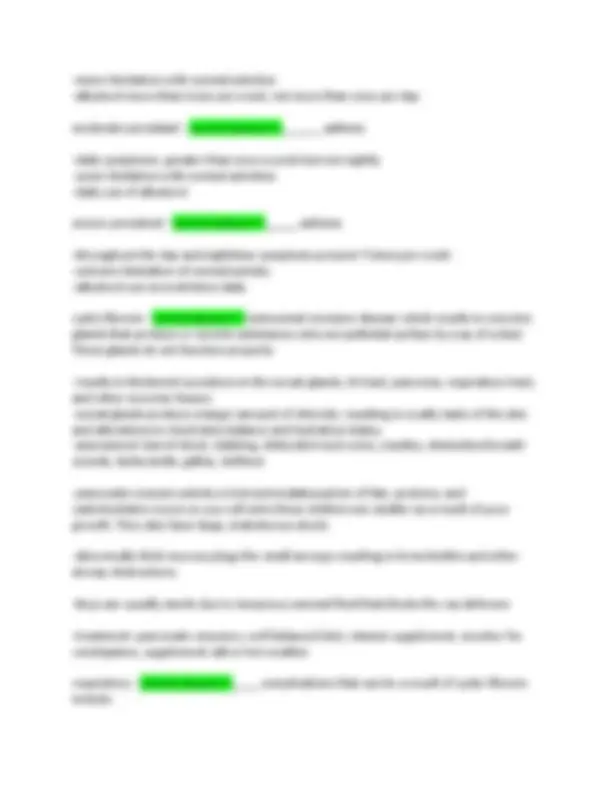
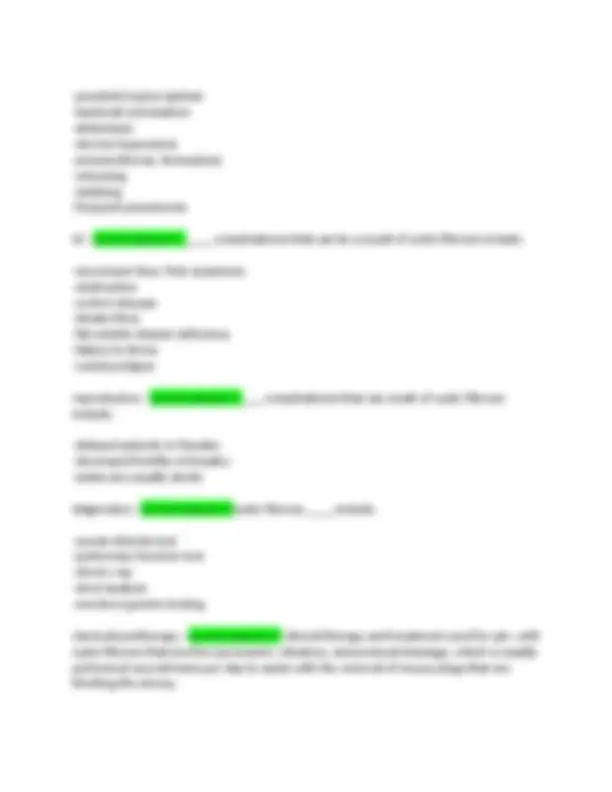
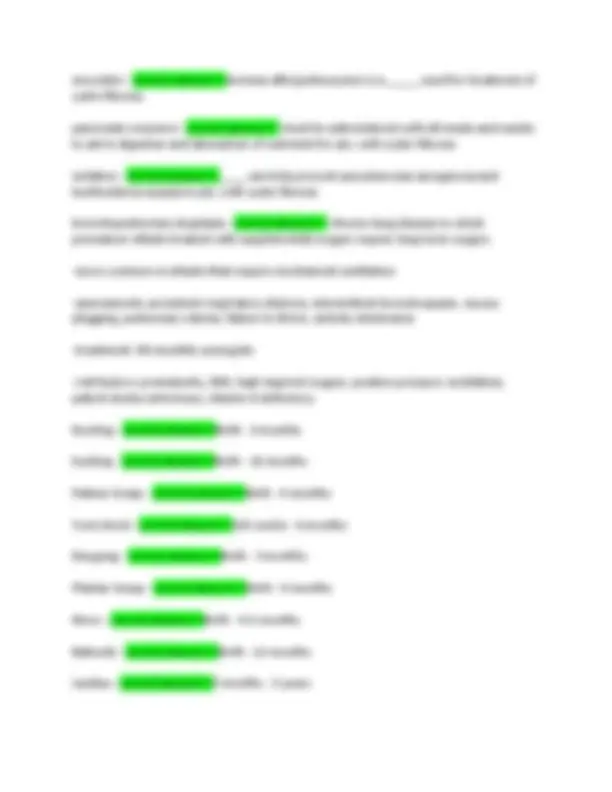
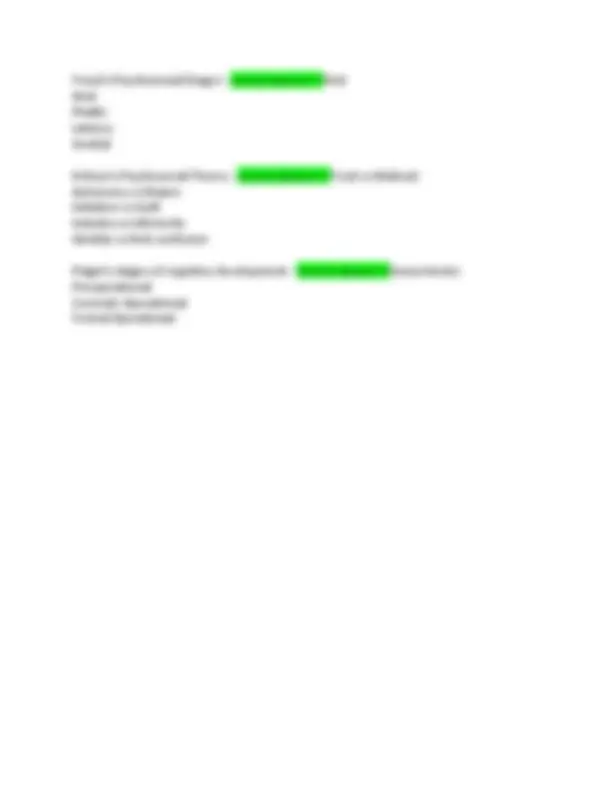


Study with the several resources on Docsity

Earn points by helping other students or get them with a premium plan


Prepare for your exams
Study with the several resources on Docsity

Earn points to download
Earn points by helping other students or get them with a premium plan
Community
Ask the community for help and clear up your study doubts
Discover the best universities in your country according to Docsity users
Free resources
Download our free guides on studying techniques, anxiety management strategies, and thesis advice from Docsity tutors
Infancy - correct answer>>-stage of development -includes neonatal (birth-1 month) and infancy (1 month and 1 year) early childhood - correct answer>>-stage of development -includes toddler (1-3 years) and preschooler (3-6 years) middle childhood - correct answer>>-stage of development -school age years (6-12) late childhood - correct answer>>-stage of development -adolescent years (13-20) oral - correct answer>>-Freud's theory of development during the infant stage. -during this period of time, offer the child a pacifier, oral stimulants, feedings -pleasure is focused on oral activities, feeding and sucking Trust vs. mistrust - correct answer>>-Erikson's theory of development during the infant
Typology: Exams
1 / 32

This page cannot be seen from the preview
Don't miss anything!

























Infancy - correct answer>>-stage of development
7.5, 10 - correct answer>>-the average newborn weighs ____ pounds at birth and loses up to ___ % of their body weight within the first week 4 - correct answer>>newborns typically double their weight by age ____ 20 - correct answer>>___ in. is the average length of the newborn and increases by 50% by 12 months of age 14 - correct answer>>____ in (35 cm.) is the average head circumference size at birth. babinski - correct answer>>which newborn reflex remains for the first year of life, unlike the other reflexes which disappear within the first few months? birth - correct answer>>rooting, sucking, palmar grasp, stepping, plantar grasp, and babinski reflexes are all present at ____. 6/8 weeks-6 months - correct answer>>how long is the infant's tonic neck reflex normally present? 3 months-2 years - correct answer>>how long is the infant's landau reflex normally present? hearing - correct answer>>which sense is fully developed at birth? nearsighted - correct answer>>-newborn's sight is typically ____ at birth.
2 months - correct answer>>by _____ age, the infant may start to smile and coo, hold head up for short periods, show interest in whats going on around, moves all extremities simultaneously, and begins to trust caregivers 4 months - correct answer>>-by _____ age, the infant is more alert and can have more difficulty falling asleep. by this age, establish a nighttime routine
antecupital fossa - correct answer>>-the ___ ___ located on the infant's head remains open until approximately 12-18 months age, to allow for rapid brain growth
2 - correct answer>>the head circumference reaches about 90% of it's adult size by __ years of age 7 - correct answer>>alveoli continue to increase in number as growth continues, and do not reach adult numbers until approximately ___ years 16 - 24 - correct answer>>bladder and kidney function reach adult levels by ____ months potbelly - correct answer>>the toddler typically has a ___ until approximately 3 years, then the musculature strengthens and belly flattens. physiologic anorexia - correct answer>>-during the toddler years and in between growth spurts, _____ ____ may be displayed because the toddlers won't be as hungry.
low fat yogurt, whole or low fat milk, broccoli - correct answer>>which of the following are the best sources of Ca for a toddler diet? raisins, beans, whole grains - correct answer>>a mother reports that her 2 year old will not eat meat. Which of the following are plant sources of iron that you can recommend? 12 - 15 - correct answer>>-by ____ months age, the child can make 2 similar sounds like "da-da"
initiative vs. guilt - correct answer>>-erikson's theory of development during the preschooler years.
communication - correct answer>>-_____ skills and development seen by the preschool years include:
logical - correct answer>>____ consequences are consequences that are realistic. used during the school aged years.
DIM V - correct answer>>-how to remember immunizations given between 4-6 years
7 - 8 - correct answer>>-Alveoli reach adult capacity by ____ years of age. Alveoli make up the majority of the lung tissue and are the major site for gas exchange. By this time, numbers reach approximately 300 million.
Winter - correct answer>>in ____ months, an increase in respiratory disorders will be more prevalent compared to summer allergies - correct answer>>There is typically an increase in _____ during the spring months in comparison to the summer bifurcation - correct answer>>-the ____ of the trachea occur in T3 of children, compared to T6 in adults.
absent - correct answer>>_____ tactile fremitus can occur in patients with pneumothorax or atelectasis respiratory distress - correct answer>>signs of ____ ____ include:
oxygen - correct answer>>-___ is considered a drug and you must have an order to administer unless you are following emergency protocols that are outlines by your facility